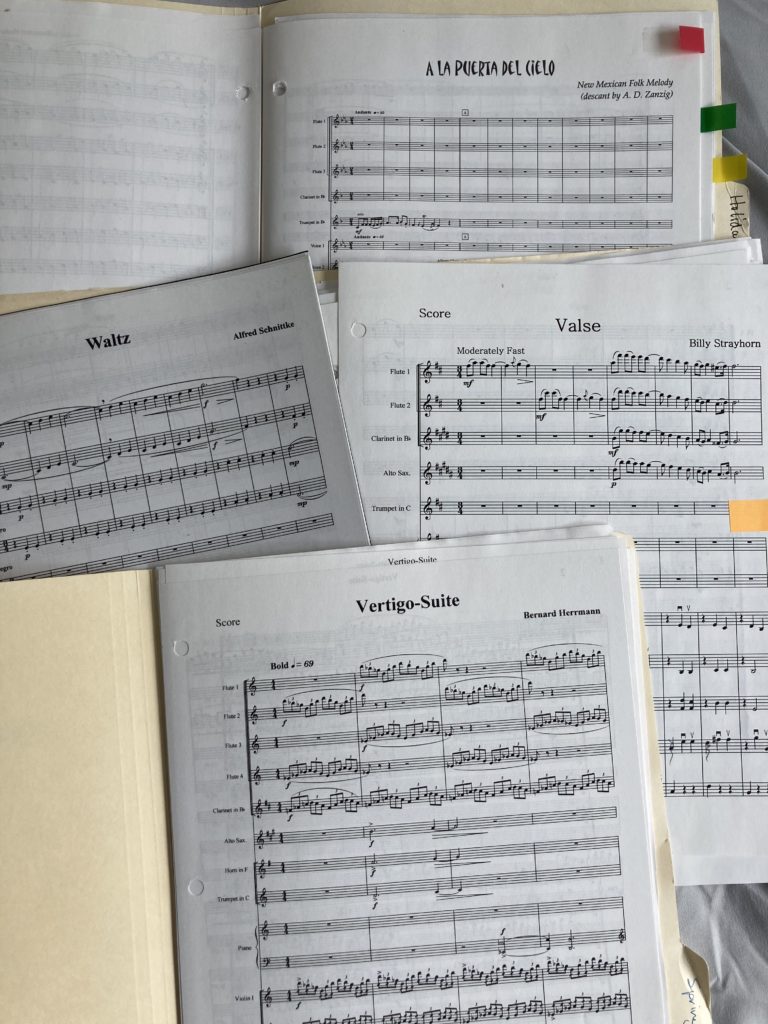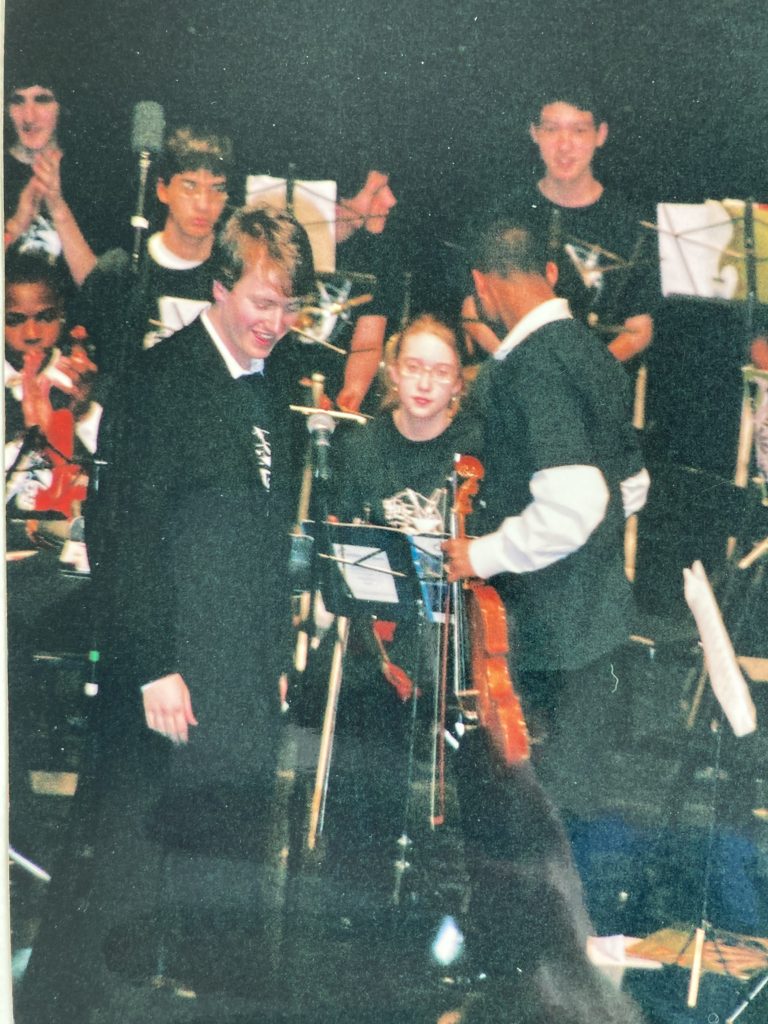I’ll admit it: I’d planned a Beethoven celebration season for 2020-2021. Obviously OSSCS won’t be presenting anything like a normal concert season, and maybe that’s just as well: I may well have been saved from myself.
The idea of a Beethoven celebration is considered deeply unfashionable in many circles, the most basic of basic bitchdom. One of my former students wrote me an email saying she thought Beethoven celebrations were plainly immoral.
For everyone who’s not on twitter, here’s why: Beethoven already has a cemented position in music history. Every time we perform a Beethoven piece, we lose an opportunity to hear a living or marginalized composer. Beethoven’s music may be great (though there are those who dispute/problematize the very notion of “greatness”), but is that any reason to further entrench the dead white male-ness of the classical music industry when we could be striking out in bold new directions?
When I decided to take on the challenge of programming a Beethoven season, I did it with this in mind. My goal was to make a season that used Beethoven as a framework to explore these ideas and to juxtapose his art in unexpected ways with forgotten voices of the past and those of the present.
Anyway, none of it’s happening now, but just for posterity’s sake, here’s what I came up with. It’s a season of 5 mainstage choral-orchestral concerts, one orchestra-only, one mostly-choral, and 3 smaller chamber concerts.
Ludwig: OSSCS’s (Theoretical) 2020-2021 Season
Marathon
BEETHOVENÂ Symphony No. 6
BEETHOVENÂ Â Ah! Perfido
BEETHOVENÂ “Gloria” from the Mass in C
BEETHOVENÂ Piano Concerto No. 4
BEETHOVENÂ Symphony No. 5
BEETHOVENÂ Sanctus from the Mass in C
BEETHOVENÂ Piano fantasia, op. 77
BEETHOVENÂ Choral Fantasy
More than just a (long) evening of music, this concert is a historical re-enactment of the December 22, 1808 gave in Vienna, “the most remarkable concert of his career.”
Passages
MARTINUÂ Â Memorial to Lidice
BEETHOVENÂ Cantata on the Death of Emperor Joseph II
MOZARTÂ Requiem (Levin completion)
Martinu’s transcendent Memorial was composed to commemorate the Nazi destruction of the Czech village of Lidice (and it happens to quote Beethoven’s 5th symphony.) It’s followed by a total rarity, a cantata composed by the teenaged Beethoven in 1790 while he was still living in Bonn. Beethoven never heard this piece performed, but it displays his unmistakable voice from the first notes. The second half features Mozart’s Requiem, composed the year after Beethoven’s cantata.
Messiah
HANDEL Messiah
This is on the program really just because it’s an annual tradition, but it’s worth noting that Handel was Beethoven’s favorite composer.
The Fans
REICHAÂ Overture in D
ADAMSÂ Â Absolute Jest
BERLIOZÂ Â Symphonie Fantastique
Anton Reicha was a close friend and admirer of Beethoven, and a musical revolutionary of a different sort; this overture is considered to be the first orchestral piece in a mixed meter (5/8). John Adams’ Absolute Jest is a super-charged piece for string quartet and orchestra, built entirely around motives by Beethoven. And of course, nobody worshipped Beethoven more than Berlioz.
Echoes
MAYERÂ String Quartet in E minor
BRAHMSÂ Â Geistliches Lied
BEETHOVEN “Pathéthique” Sonata (mvmt 2)
ELGARÂ Â Lux Aeterna
SHAWÂ Â Seven Joys
First we have an 1846 string quartet by Emilie Mayer, known in her time as “the female Beethoven.” Then Brahms’ stunning choral Geistliches Lied and the choral version of Elgar’s “Nimrod” variation, known as the “Lux Aeterna” (preceded by the movement of the “Pathéthique” upon which it was modeled.) The major work on the concert is Caroline Shaw’s Seven Joys for choir and brass quintet, which explores spatial effects and resonances as it pays homage to the 9th symphony.
The Haters
DEBUSSY  Prélude à l’après-midi d’un faune
CHOPINÂ Piano Concerto No. 1
CAGEÂ Â 4’33”
BRITTEN Scenes from Peter Grimes
It seems only fair that, in a concert season devoted to Beethoven, his detractors should also have a voice. These four composers leveled some pretty sick burns at ol’ Ludwig, and they are each represented by the piece that made them famous (or infamous).
Master and Scholar
NEEFEÂ Piano Sonata No. 1 [mvmt 1]
ALBRECHTSBERGERÂ String Trio No. 2 [mvmt 1]
HAYDNÂ Â Il maestro e lo scolarevon
ARNIMÂ Songs and Duets
Archduke RUDOLFÂ Clarinet Trio in E-flat [mvmt 1]
BEETHOVENÂ “Archduke” Trio
A concert featuring music students and their teachers. We all know that Beethoven “studied” with Haydn, but the two never really got along; Beethoven considered his greatest teacher to have been Christian Gottlob Neefe, a Bonn-based opera composer and organist. After moving to Vienna, Beethoven sought out Johann Albrechtsberger, a rigorous theoretician and counterpoint expert. Haydn’s divertimento for 2 pianists, Il maestro e lo scolare, is a delightful theme and variation set. Beethoven didn’t care much for teaching himself, but he did give some tips to one of his unattainably noble girlfriends, Bettine von Arnim, and he gave formal lessons to his great benefactor Archduke Rudolf, who became the dedicatee of his monumental trio, op. 97.
Sonata Mulattica
BOULOGNE Overture to L’amant anonyme
HAYDNÂ Symphony No. 62 in D
BEETHOVENÂ “Kreuzer” Sonata
BRIDGETOWERÂ “Henry, a Ballad” (orch. White)
Beethoven’s life story intersects with the history of race in Europe in fascinating ways, not least of which is that he was frequently thought to have African ancestry himself. This concert features the work of two biracial composers who were active during Beethoven’s lifetime: the “Chevalier de Saint-Georges” aka Joseph Boulogne, a French violinist, fencer, and composer who knew and influenced Mozart; and George Bridgetower, a multi-national musician who grew up in the court at Esterhazy, where his father was a servant. Tutored by Haydn, Bridgetower went on to a stunning career as a virtuoso violinist, and was the original dedicatee of Beethoven’s “Kreutzer” sonata. This concert will be interspersed with poetry from Rita Dove’s 2009 collection “Sonata Mulattica,” which tells the story of Bridgetower’s life.
Ode to Joy
SCHUBERTÂ “An die Freude” (orch. White)
MASON A Joyous Trilogy
BEETHOVENÂ Symphony no. 9
This concert begins with Schubert’s setting of the “Ode” text that doesn’t take it quite so… seriously. Then a repeat performance of Quinn Mason’s A Joyous Trilogy, which was such a hit when we premiered it in February 2020. Followed by the very cornerstone of the choral-orchestral repertoire: Beethoven’s mighty 9th symphony.

